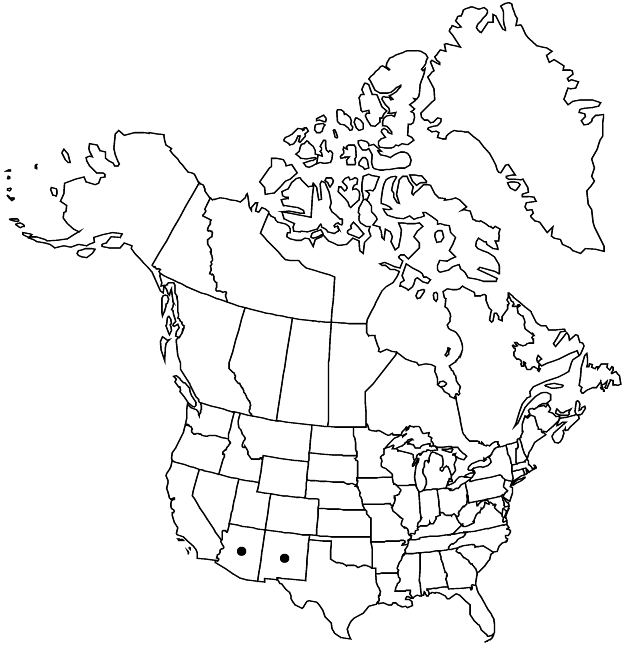Cerastium nutans var. obtectum
J. Wash. Acad. Sci. 29: 475. 1939.
Stems erect, stout, with straggling basal shoots, glandular and viscid distrally, woolly-pubescent proximally, sometimes densely so. Leaves often marcescent, sessile; midstem leaves with blades narrowly lanceolate-triangular, broadest at base (similar to C. fastigiatum but broader), 25–32 × 4–7 mm, apex mostly acute, woolly-pubescent, sometimes densely so. Pedicels 1.5–3 times as long as capsule. Flowers: sepals 5–6 mm; petals ca. 1.5 times as long as sepals. Capsules 12–13 × 3 mm. 2n = 34.
Phenology: Flowering summer.
Habitat: Sandy canyons and washes, ponderosa pine woodlands, among rocks in arid uplands
Elevation: 2000-3000
Distribution

Ariz., N.Mex., Mexico.
Discussion
As pointed out by Kearney and Peebles, var. obtectum tends to intergrade with var. nutans. Its status requires further study. It and Cerastium fastigiatum appear to replace the type variety in Arizona and New Mexico, but extreme plants of var. obtectum are infrequent and most of the material that I have examined is more or less intermediate with the type variety.
Selected References
None.